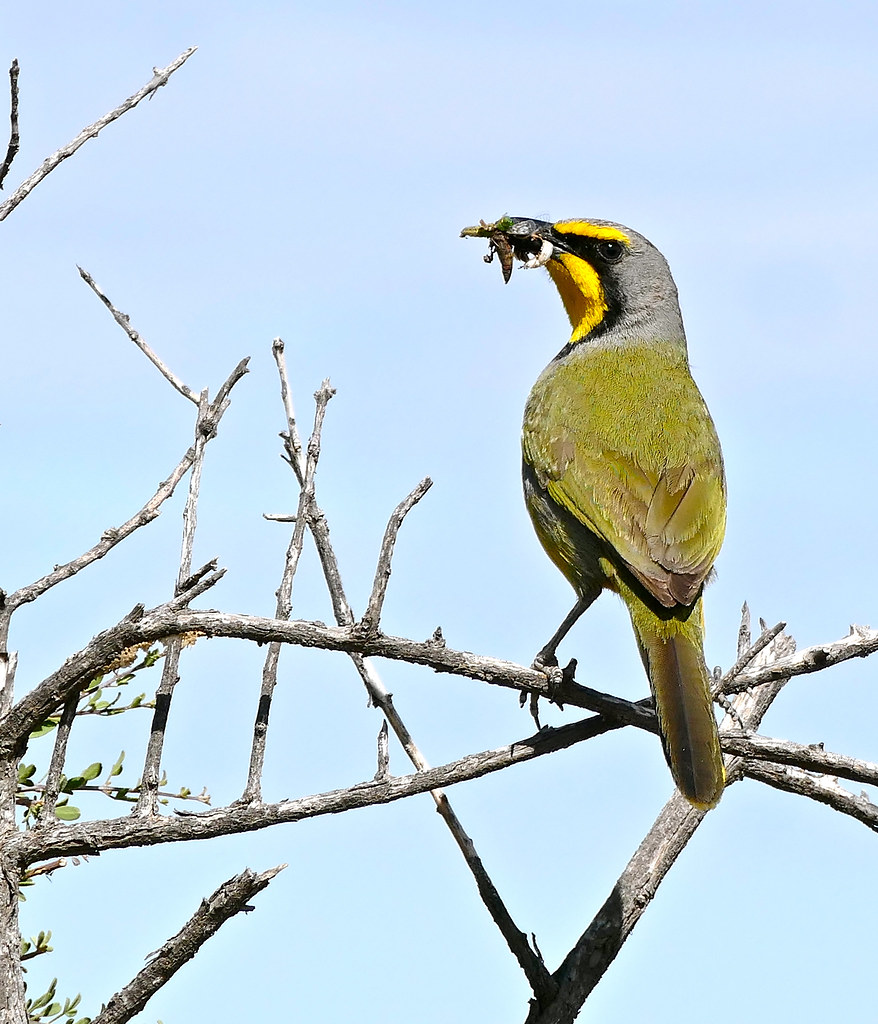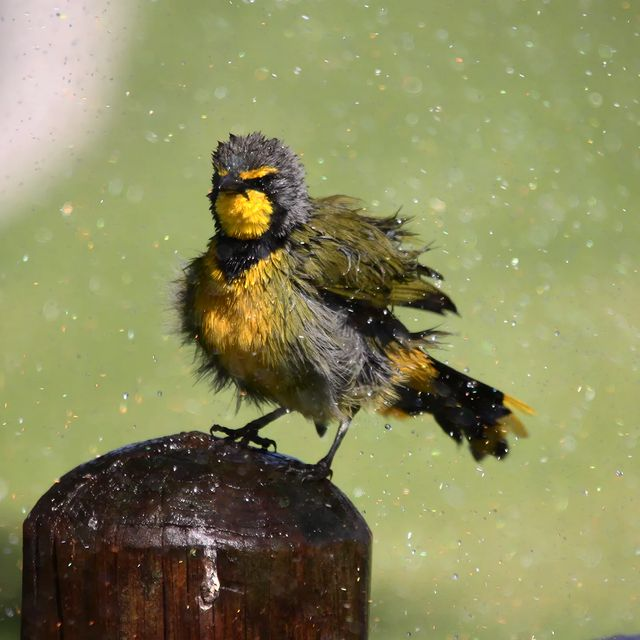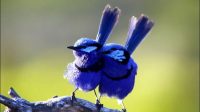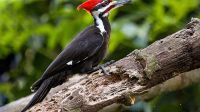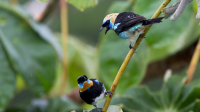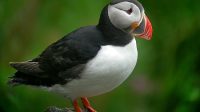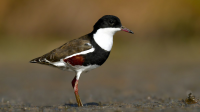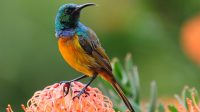The Bokmakierie is easily recognisable by the unique pectoral band that curves from its chest to the base of its bill, creating an attractive collar.

The bokmakierie, scientifically known as Telophorus zeylonus, is a type of shrike bird that boasts an attractive appearance. Adult birds are around 22–23 cm long and have an olive-green upper body, along with a noticeable bright yellow tip on the black tail. Its head is grey and features a yellow supercilium, while its strong bill has a hooked upper mandible. The underparts of the bokmakierie are bright yellow and are separated from the throat and breast by a broad black collar that extends from the sides of the neck to the beak, passing through the eye. The bird can be easily recognised by its blue-grey legs and feet.

Although both males and females look similar, juveniles have a less vibrant greyish-green colour and do not have the black forehead. The species has four subspecies that are mainly differentiated by their colour shades and sizes.
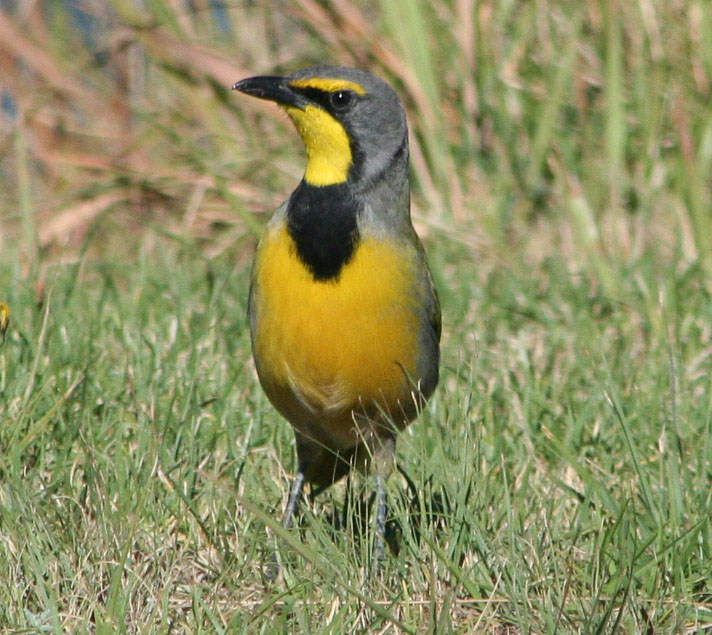
This bird is native to Africa and can be found in several areas including southwestern Angola, Namibia, southern Botswana and throughout South Africa.
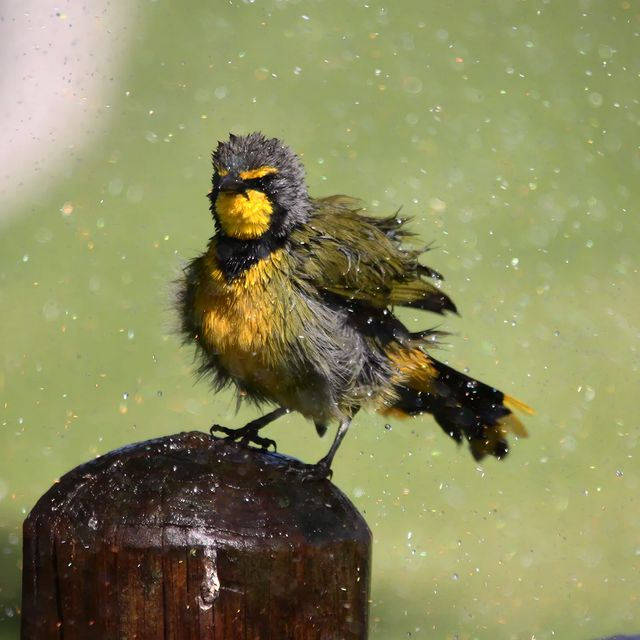
The bokmakierie can usually be observed in open savannahs and shrublands, but can also be found in scrubby deserts, plantations, orchards, vineyards, as well as in urban gardens and parks.
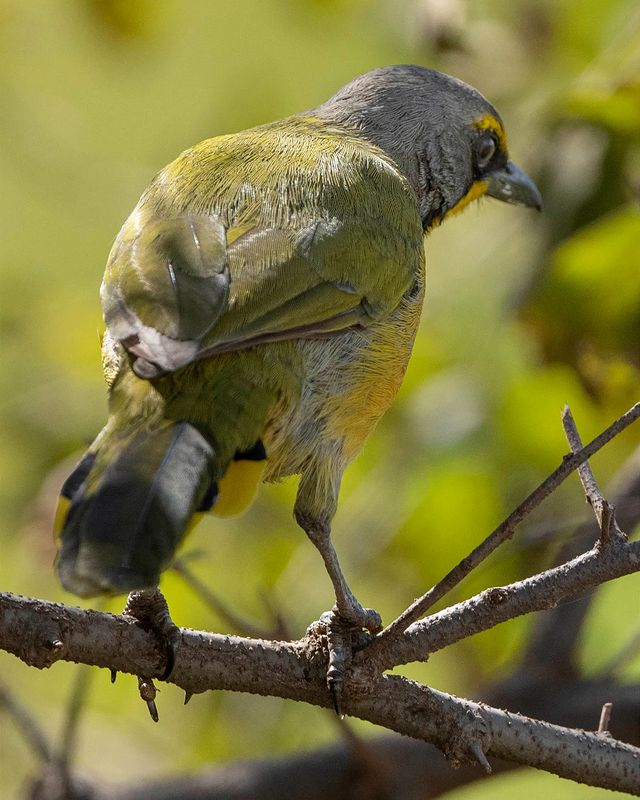
These avian creatures are known for their opportunistic nature and feed primarily on insects such as beetles, crickets, grasshoppers, bugs, moths, caterpillars, wasps, ants, flies, mantises, winged termites, and stick insects. However, they will also consume millipedes, centipedes, snails, spiders, earthworms, lizards, small snakes, chameleons, geckos, frogs, small birds, and even some fruits and berries.

The bokmakierie bird is capable of breeding throughout the year. Both male and female work together to build a cup-shaped nest using materials such as small twigs, leaves, roots, tendrils, grass and bark. They usually place the nest among dense undergrowth, hidden by thick vegetation. The female then lays 2 to 6 blue-green eggs with reddish-brown or lilac markings, which are incubated by both parents for 14 to 19 days. Once hatched, the chicks are fed by both parents and can begin to fly after 15 to 21 days.
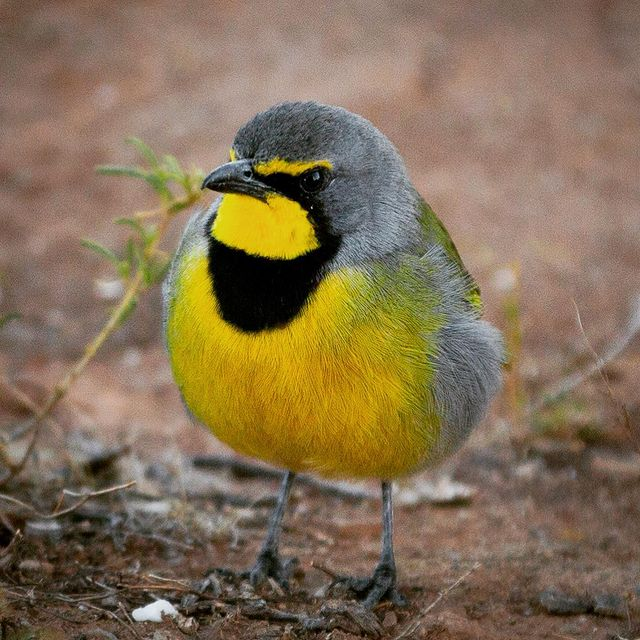
This particular type of creature has a wide breeding range and is known to exist in many places. The number of individuals is believed to remain constant unless there are notable declines or major dangers.
